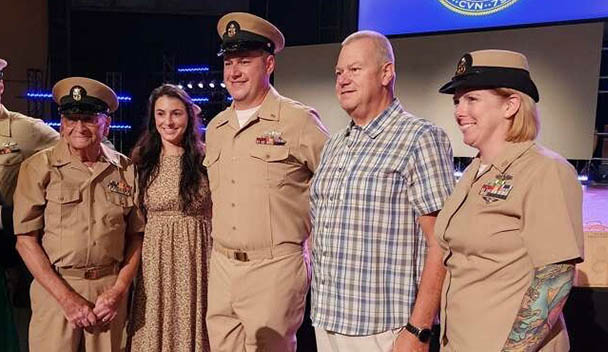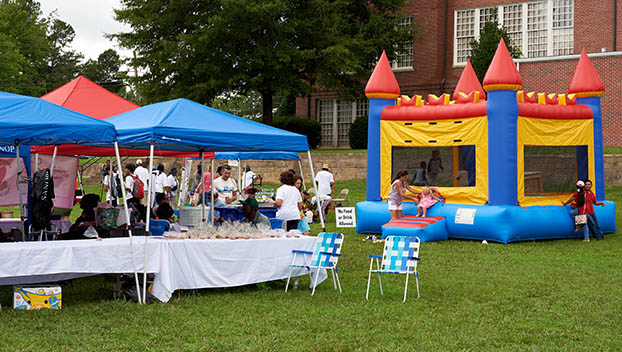Local man gets to ‘pin’ family member
Published 8:00 am Thursday, October 17, 2024

- Retired Navy Master Chief Petty Officer Gus Villalobos assisted in ‘pinning’ his grandson-in-law’s Chief’s Anchors during a recent ceremony. Pictured, from left to right, are MCPO Gus Villalobos, his granddaughter Cassidy Cicchetto Swartz, her husband and new ‘Chief’ Nick Swartz and Nick’s father, Ron Swartz of Michigan.
|
Getting your Trinity Audio player ready...
|
By Greg Eanes
Special to The K-V Dispatch
A pinning ceremony is an important part of a Navy career. It marks a sailor’s promotion from First Class Petty Officer to Chief Petty Officer, the highest enlisted rank in the Navy. And for one Victoria man, it was also a time to celebrate family.
Trending
Retired Master Chief Petty Officer Gus Villalobos recently helped pin Chief’s Anchors on his grandson-in-law, Nick Swartz, who had just been promoted in ceremonies for his service aboard the nuclear-powered U.S.S. John F. Kennedy aircraft carrier. Both the 91-year-old Villalobos and his grandson-in-law are members of Victoria VFW Post 9954.
To be eligible for a pinning ceremony, sailors must meet specific requirements. They have to pass an exam, have exceptional performance evaluations and be selected by a board of their superior officers. The Chief’s Anchors mentioned above symbolize their new rank and leadership responsibilities.
Villalobos said the Sept. 27 pinning ceremony, held in a church near Newport News, gave him a rare opportunity to learn about one of the Navy’s newest nuclear-powered aircraft carriers, which is still “fitting out” with its commissioning crew.
WHAT IS ‘FITTING OUT’?
Fitting out is the final stage of shipbuilding, occurring after the vessel has been launched or floated out of its dry dock. During this period, the ship’s interior construction gets completed,
and all remaining systems and equipment are installed and tested. For aircraft carriers, fitting out is a complex and time-consuming process, involving the installation of a number of things.
First, that includes the power plant and machinery. Engines, generators, and other machinery are fitted and tested to ensure the ship’s propulsion and electrical systems are operational. Second, the interior equipment and systems go in. That includes electrical, plumbing, and HVAC systems are installed, as well as communication, navigation, and combat systems. Third, work wraps up on the aviation systems. That covers the flight deck and hangar deck infrastructure, including arresting gear, catapults, and aircraft lifts. All of that gets installed and tested. Fourth, all anti-submarine warfare systems are added. That’s radar, sonar and anything else fitted to help the carrier detect and engage submarines.
So how long does this take? It depends. The process can last a few months or up to a year, depending on the complexity of the ship and availability of resources. The John F. Kennedy is currently still in the Newport News shipyard, with delivery to the Navy scheduled for sometime in 2025.
The nuclear-energy will allow it to cruise for 20 to 25 years with its 90 aircraft and 4,660-man crew. Villalobos said he was impressed with the ship.
FROM KOREA UNTIL NOW
As for Villalobos, he had enlisted in the Navy at 18, becoming a radioman serving in the Korean War. During that time, he earned a Combat Action Ribbon when his ship was hit by Communist shore batteries. Villalobos also cross-trained to be a Cryptologic Technician, listening in on Soviet secrets during the Cold War. On returning to Victoria, he became active in the Veterans of Foreign Wars Post, where he served as the Fourth District Commander, earning the rare “All-American” status.


